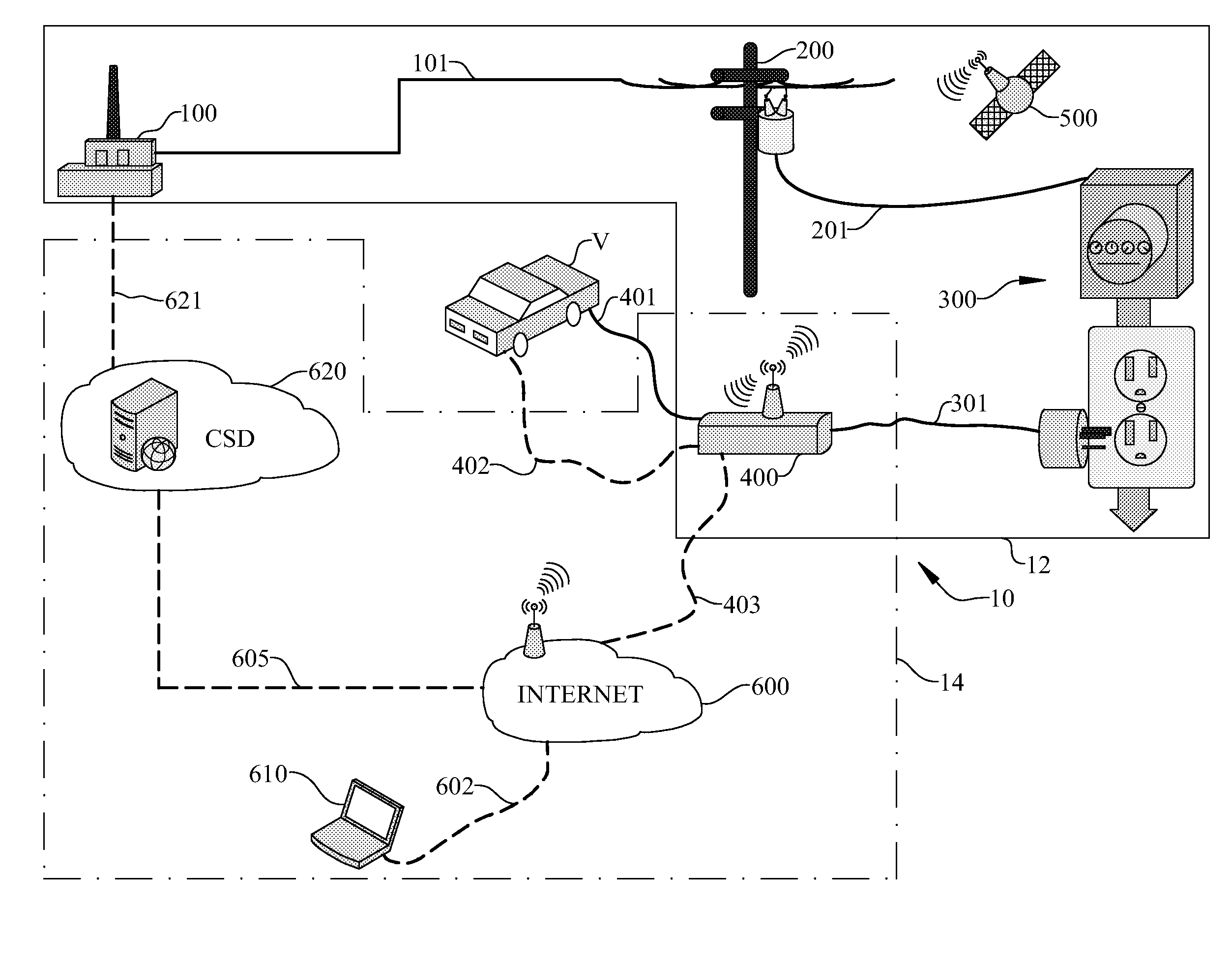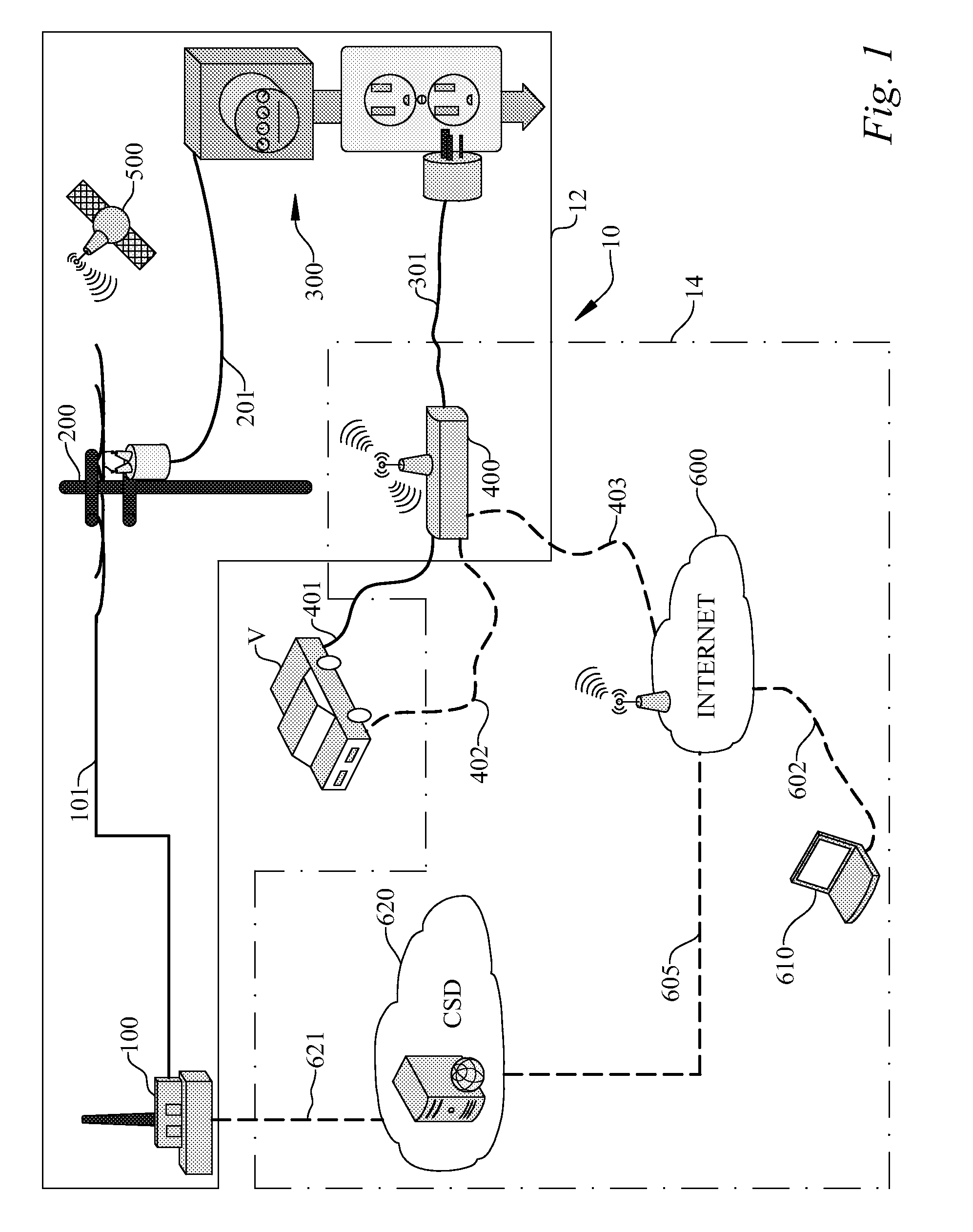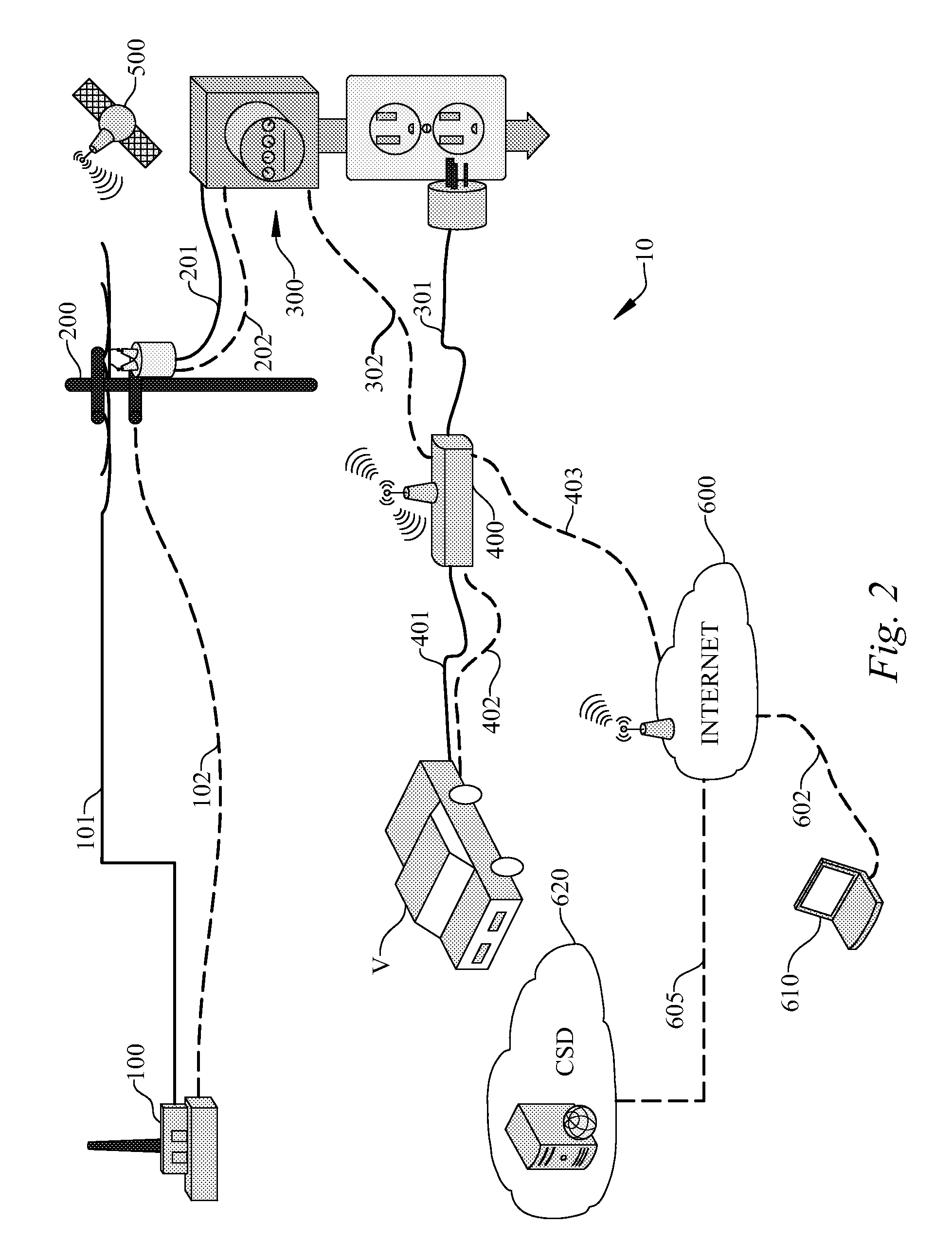Mobile intelligent metering and charging system for charging uniquely identifiable chargeable vehicle destinations and method for employing same
a charging system and uniquely identifiable technology, applied in the direction of liquid/fluent solid measurement, process and machine control, electric devices, etc., can solve the problems of adding additional stress to an already overloaded power grid, reducing and increasing electric power costs during peak us
- Summary
- Abstract
- Description
- Claims
- Application Information
AI Technical Summary
Benefits of technology
Problems solved by technology
Method used
Image
Examples
example 2
Vehicle System Meter to AMI Smart Meter and Consumer Specific Data System
[0029]By way of identification only, AMI is an acronym for the term “Advanced Metering Infrastructure,” which is known in the art to represent a means, generally deployed by a utility company, to serve as an automated communication infrastructure that allows the utility direct access to a customer's meter and / or area / region. With this direct access, the utility is able to implement demand response programs and also give real-time pricing signals and energy consumption set points to homes and businesses. The AMI allows two-way communications between the utility company and the meter.
[0030]In this embodiment, seen illustrated in FIG. 2, the power distribution system limb (12) is similar to that as seen in Example 1, and the various structures may be exemplified as discussed above in Example 1. Electrical power flows from a power source (100), in this case a utility, through a power source—point of distribution po...
example 3
Vehicle System Meter to AMI UCM and Consumer Specific Data System
[0033]This embodiment illustrates a variation on the AMI system described in Example 2, and is seen illustrated in FIG. 3. The details of the power distribution system limb (12) remain unchanged. However, in the power consumption control and recordation limb (14) of the system (10), the vehicle system meter (400) communicates via AMI located on the point of distribution means (200) through a point of distribution—vehicle system meter communication link (203), rather than through the point of service—vehicle system meter communication link (302) and then to the point of distribution (200) by means of a point of distribution—point of service communication link (202) as previously described.
[0034]This embodiment describes a situation where the vehicle system meter (400), running an internet (600) enabled webserver that allows the owner of the vehicle system meter (400) to implement charging profiles and view statistics, c...
example 4
Vehicle System Meter to Mobile Metering Infrastructure (MMI) and Consumer Specific Data System
[0035]This embodiment, seen in FIG. 4, expands the flexibility of the system beyond that of Example 1, which contemplated a dedicated point of service (300) in the power transmission limb (10). In this embodiment, a mobile metering interface (MMI) allows charging anywhere the system (10) is configured for its use, without the need for any metering at the point of service (300). In addition, this embodiment illustrates the ability of the MMI system to detect and identify multiple power sources (110, 120, 130) and for the consumer specific data system (620) to differentiate and report to multiple power sources (110, 120, 130) based on such detection and identification.
[0036]As seen in FIG. 4, multiple power sources (110, 120, 130) transmit power via their respective power source—point of distribution power transmission links (101) through point of distribution (200) to multiple points of serv...
PUM
 Login to View More
Login to View More Abstract
Description
Claims
Application Information
 Login to View More
Login to View More - R&D
- Intellectual Property
- Life Sciences
- Materials
- Tech Scout
- Unparalleled Data Quality
- Higher Quality Content
- 60% Fewer Hallucinations
Browse by: Latest US Patents, China's latest patents, Technical Efficacy Thesaurus, Application Domain, Technology Topic, Popular Technical Reports.
© 2025 PatSnap. All rights reserved.Legal|Privacy policy|Modern Slavery Act Transparency Statement|Sitemap|About US| Contact US: help@patsnap.com



